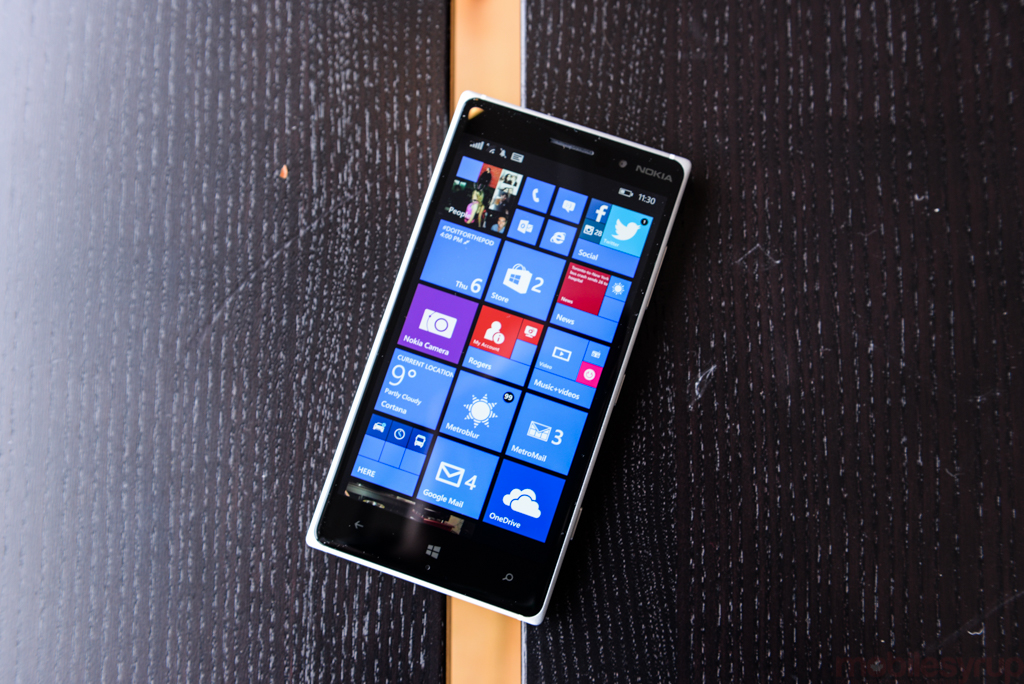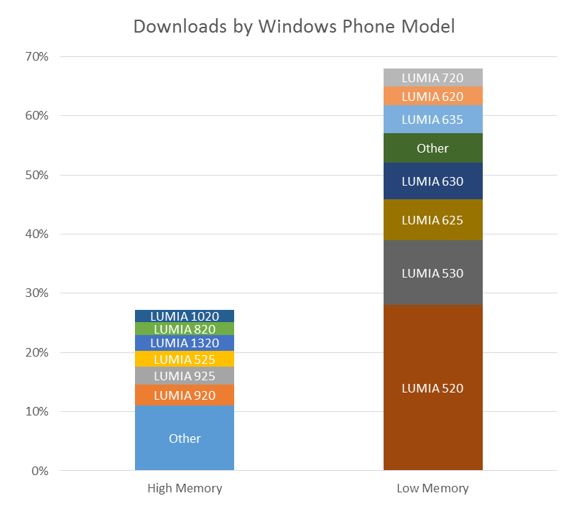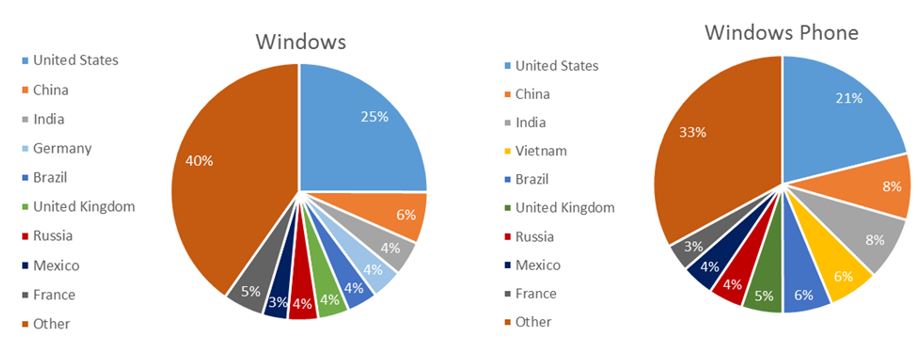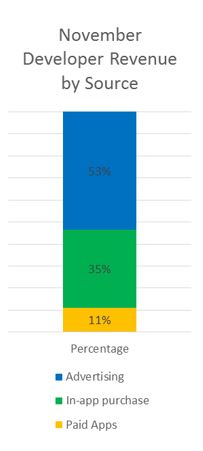
Microsoft has posted its latest in a series of blog posts detailing app store download behaviour in December.
Specifically, the company confirms what we’ve all been thinking: few Windows Phone owners own high-end devices. In fact, the majority of Windows Phone users still run devices with 512MB of RAM.

The company provides this data to developers for purposes of encouraging them to update their apps to support low-memory devices. ‘Low Memory’ comprises Windows Phone 8 devices with 512MB of RAM and Windows Phone 7.5/7.8 devices with 256MB RAM.
 As you can see, Windows Phone 8.1 now runs on 65% of total Windows Phone devices, with Windows Phone 8 comprising 30% and Windows Phone 7, in all its capacities, making up less than 5%. This allows developers to optimize apps for the latest version of the OS without worrying about compatibility, but being forced to spare resources due to low RAM counts is a potential roadblock.
As you can see, Windows Phone 8.1 now runs on 65% of total Windows Phone devices, with Windows Phone 8 comprising 30% and Windows Phone 7, in all its capacities, making up less than 5%. This allows developers to optimize apps for the latest version of the OS without worrying about compatibility, but being forced to spare resources due to low RAM counts is a potential roadblock.
The Lumia 520 and 530 are by far the two most popular devices in the Windows Phone ecosystem, followed by the Lumia 625, 630 and 635, all low- to mid-range devices in the $100 to $200 range. High-memory devices are divided fairly equally between then Lumia 1020, 920 and others.

Canada doesn’t place in the 10 top in terms of top Windows Phone ecosystems, making it very clear that we don’t have much of a sales ecosystem in this country (though population is a contributing factor).

Finally, paid apps only account for 11% of Windows Phone developers’ revenue, with in-app purchases making up 35% and advertising the majority with 53%. This breakdown may be even more stark on iOS and Android.
Overall, while Microsoft is not decrying the Windows Phone app ecosystem as being unhealthy, it’s certainly not in a great way, especially in North America.
[source]Microsoft[/source]
MobileSyrup may earn a commission from purchases made via our links, which helps fund the journalism we provide free on our website. These links do not influence our editorial content. Support us here.


